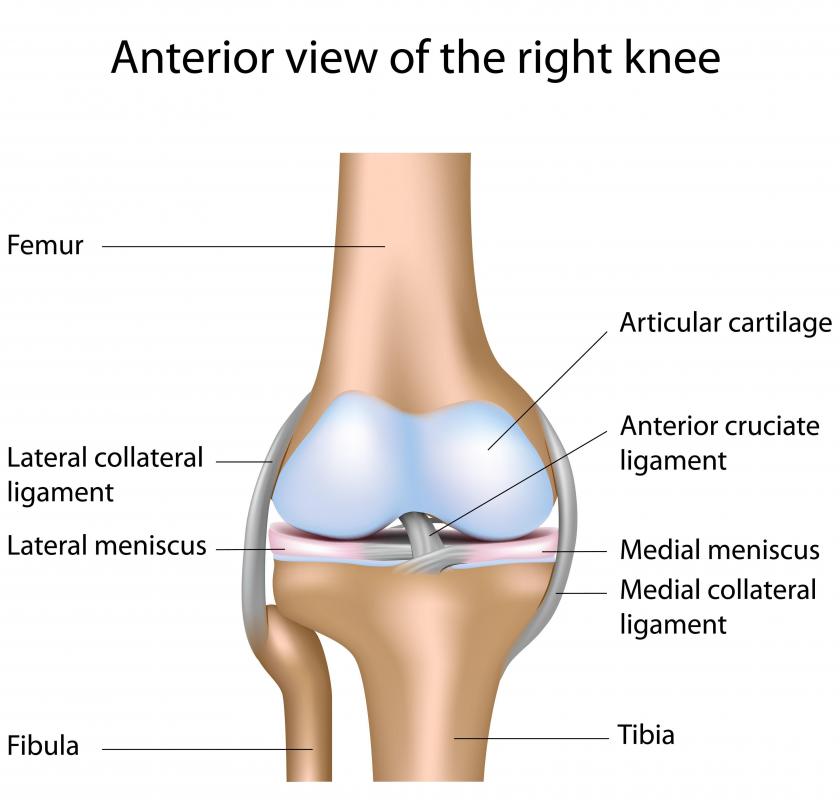At WiseGEEK, we're committed to delivering accurate, trustworthy information. Our expert-authored content is rigorously fact-checked and sourced from credible authorities. Discover how we uphold the highest standards in providing you with reliable knowledge.
What Precautions do I Need to Take After Knee Surgery?
Whether your knee damage is the result of an accident, arthritic damage or a congenital condition, proper care after knee surgery is important. Taking precautions to prevent clotting, incision damage, infection and pneumonia will speed the healing process. Your doctor will provide guidelines, but it will be up to you to put every necessary precaution in place so that you can get on your feet and back to normal as quickly as possible. Some of the precautions you should take after knee surgery might include wearing support stockings or compression stockings, keeping your foot elevated when possible, doing light leg exercises and keeping the incision area clean.
After knee surgery, deep vein thrombosis, or the formation of blood clots in the legs, is especially risky. Clots, which are collections of blood platelets, fibrin fibers and red blood corpuscles, can create problems in a couple of ways. A clot might dam blood flow, slowing it to the point it compromises efficient healing. Alternatively, clots that have gained substantial size can break loose and be carried along with the blood flow to the lung. The result can be pulmonary embolus, caused by a clot blocking a lung artery.

Only 5 percent of all deep vein thrombosis clots ultimately result in a pulmonary embolus, but those that do can be life-threatening. In fact, about 0.01 percent of total knee and total hip surgeries result in death. Taking precaution against deep vein thrombosis means becoming active as early as the first day after knee surgery. In addition, the doctor likely will instruct you to wear support stockings or a compression stocking sleeve to increase blood flow and will include anticoagulants as part of your drug protocol.

When you’re in bed, elevate your foot to encourage the blood to circulate. Although you might not feel much like exercising, completing a few sets of leg lifts and ankle exercises several times a day is important. After you go home, be alert for warning signs for as long as three months after knee surgery. If you experience shortness of breath, chest pain, dizziness or coughing attacks, notify your doctor immediately.

Another risk to be aware of is incision damage that can lead to infection and, in the worst cases, future hospitalization. The risk of incision damage after knee surgery is heightened for patients who are smokers or obese and those who have poor circulation or diabetes. If you fall into any of these categories and especially into more than one, be sure that your doctor is aware of your condition or conditions. Discuss with your doctor the types of pre-operative precautionary steps you can take, such as losing weight, increasing exercise or quitting smoking. Putting these precautions into place before the surgery can prevent problems down the line.

There is always a risk of infection following any surgery. After knee surgery, infection is most likely to begin at the site of the incision, especially if it isn’t healing quickly. Being highly proactive is as simple as keeping the area surrounding the incision scrupulously clean.
Wash your hands thoroughly before touching any skin close to the incision. Place only clean clothing or gauze over the incision. If you have pets, don’t allow them near the wound until it has fully healed. Examine the incision daily for signs of infection such as swelling, redness or increased tenderness to the touch. Notify your doctor if any of these occur, and do so promptly if these signs are accompanied by an unexpected increase in pain.

As with all surgeries, the possibility of pneumonia is a concern after knee surgery. There are a number of breathing exercises you can do to diminish this danger. It’s a good idea to put these exercises into practice before surgery to better equip yourself after knee surgery. Encouraging yourself to cough might not seem like much of an exercise, but your doctor will insist you do so several times a day following the operation. It’s a good way to expel secretions and clear the lungs so that pneumonia cannot settle in.

Your doctor will likely give you a spirometer. This simple device gives you a visual. With every breath you exhale, a lightweight ball spins in a tube; the stronger your exhalations, the higher and longer the ball rotates. You also might be given a series of breathing exercises involving long, slow, deep inhalations and exhalations. Be sure to practice these exercises a minimum of 10 times an hour following your knee surgery until your doctor says it is no longer necessary.
AS FEATURED ON:
AS FEATURED ON:
















Discuss this Article
Post your comments